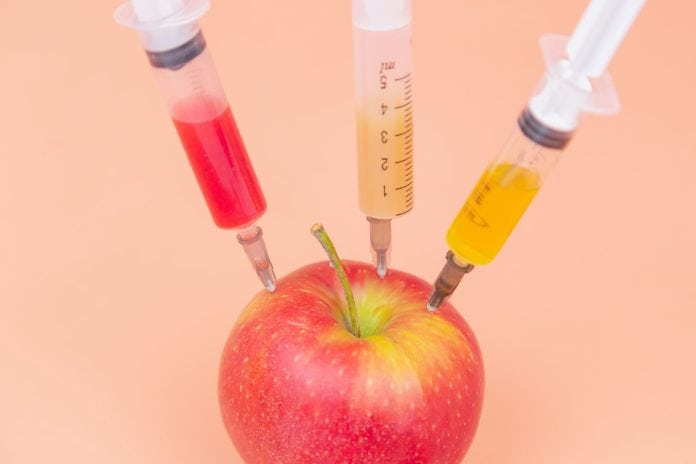
Welcome to the captivating world of the FDA’s GRAS list, where we delve into the intriguing realm of safe ingredients. In today’s fast-paced world, where consumers are becoming increasingly health-conscious, it is crucial to understand the safety and potential risks associated with our ingredients. The FDA’s GRAS list serves as a comprehensive guide, unveiling the elements that have undergone extensive research and are deemed safe for consumption.
Join us on this exploration as we uncover the secrets behind the generally regarded as safe fda list, shedding light on the rigorous evaluation processes, scientific studies, and industry standards that determine the safety of these ingredients. Prepare to be amazed as we unravel the mysteries of the GRAS list, empowering you with the knowledge to make informed decisions about the foods and products you choose. Let’s embark on this journey together and unlock the fascinating world of ingredients considered safe.
Understanding the Importance of Food Safety Regulations
Food safety regulations play a vital role in protecting consumers from potential harm caused by unsafe ingredients. The FDA (Food and Drug Administration) is the one responsible for the safety and proper labeling of food products in the United States. Their primary objective is to prevent foodborne illnesses and adverse health effects caused by harmful substances.
The FDA’s role in food safety regulation is crucial, as it establishes guidelines and standards that manufacturers and producers must adhere to. These regulations protect consumers and ensure fair practices within the food industry. By setting strict standards and conducting regular inspections, the FDA aims to maintain high safety and transparency in the market. This includes monitoring and evaluating the safety of ingredients through processes such as the GRAS list.
Food safety regulations are not limited to the United States alone. Many countries worldwide have regulatory bodies that oversee the safety of food products. These regulations are essential for maintaining public health and instilling confidence in the food we consume.
What Does “Generally Regarded as Safe” Mean?
The term “Generally Regarded as Safe,” commonly referred to as GRAS, is used by the FDA to categorize ingredients considered safe for consumption. This designation implies that a substance, when used per good manufacturing practices, is not expected to cause harm to consumers under normal conditions of use.
The GRAS status is given to ingredients with a long history of everyday use in food without any reported adverse effects. It is important to note that the GRAS status does not guarantee absolute safety. Instead, it reflects the current scientific knowledge and understanding of the ingredient’s safety. Ongoing research and evaluation are necessary to ensure that new information regarding an ingredient’s security is promptly considered.
The GRAS list is a valuable resource for consumers and food manufacturers. It indicates which ingredients are safe for various food products, allowing consumers to make informed choices based on their preferences and dietary needs.
History and Development of the GRAS List
The concept of the GRAS list dates back to the 1950s when the FDA first introduced the idea of self-affirmed GRAS status. This allowed food manufacturers to determine the safety of their ingredients without seeking approval from the FDA. However, concerns arose regarding the reliability and consistency of self-affirmed GRAS determinations.
To address these concerns, the FDA established a formal process for the voluntary submission of GRAS notifications. This process allows manufacturers to submit scientific evidence supporting the safety of their ingredients. The FDA then evaluates these notifications and decides regarding the ingredient’s GRAS status.
Over the years, the GRAS list has evolved to include various ingredients, including substances previously considered unsafe or lacking scientific data. The development of the GRAS list reflects advancements in scientific research and a growing understanding of the safety of various ingredients.

Criteria for Determining GRAS Status
The FDA has established specific criteria that must be met for an ingredient to be designated as GRAS. These criteria ensure that GRAS status is determined based on sound scientific evidence and rigorous evaluation processes.
One of the critical criteria is the consensus of qualified experts. To obtain GRAS status, an ingredient must have a widespread recognition of safety among experts in the field. This recognition is based on a comprehensive review of the available scientific data, including toxicological studies, clinical trials, and epidemiological evidence.
Additionally, an ingredient must have a history of safe use in food. This means that the element has been consumed by many people for an extended period without any reported adverse effects. The FDA considers factors such as the amount of exposure, duration of use, and the population groups that have been consuming the ingredient.
Furthermore, an ingredient must be manufactured following good practices to ensure safety. This includes having proper quality control measures in place to prevent contamination or adulteration during the manufacturing process.
The criteria for determining GRAS status are designed to ensure that the safety of consumers is prioritized. By requiring scientific evidence, historical data, and adherence to manufacturing practices, the FDA aims to provide a comprehensive evaluation of ingredient safety.
Common Ingredients on the GRAS List
The GRAS list includes a wide variety of ingredients commonly found in everyday food products. These ingredients range from natural substances to synthetic compounds, serving various purposes such as flavoring, coloring, and preserving.
One common ingredient on the GRAS list is salt or sodium chloride. Salt has been used for centuries to enhance food flavor and is considered safe when consumed in moderation. However, excessive salt intake can have adverse health effects, such as increased blood pressure. Therefore, it is essential to be mindful of salt consumption and to balance it with a healthy diet.
Another ingredient commonly found on the GRAS list is sugar or sucrose. Sugar is widely used as a sweetener in many food and beverage products. While it is generally considered safe, excessive sugar consumption has been linked to various health issues, including obesity and diabetes. It is crucial to consume sugar in moderation and be aware of hidden sources of added sugars in processed foods.
Additionally, many food additives, such as preservatives and emulsifiers, are included on the GRAS list. These additives improve the texture, shelf life, and quality of food products. They undergo rigorous testing to ensure their safety and are only included on the GRAS list if they meet the FDA’s criteria.
The Role of the FDA in Monitoring GRAS Substances
The FDA plays a critical role in monitoring the safety of GRAS substances. While manufacturers are responsible for determining the GRAS status of their ingredients, the FDA has the authority to review and evaluate these determinations.
Under the FDA’s voluntary GRAS notification process, manufacturers can submit scientific evidence supporting the safety of their ingredients. The FDA then reviews the submitted data and decides regarding the ingredient’s GRAS status. This process ensures that the FDA has a comprehensive understanding of the safety of GRAS substances.
In addition to the voluntary notification process, the FDA can conduct independent evaluations of GRAS substances. This allows the FDA to stay updated on the latest scientific research and make informed decisions regarding the safety of these substances.
Furthermore, the FDA has the authority to take action if new evidence emerges that raises concerns about the safety of a GRAS substance. This can include revising the GRAS status of an ingredient, issuing warnings, or even removing the ingredient from the market if necessary. The FDA’s ongoing monitoring and evaluation of GRAS substances help ensure the food supply’s continued safety.

How the GRAS List Affects Consumers and the Food Industry
The GRAS list significantly impacts both consumers and the food industry. For consumers, the GRAS list provides valuable information about the safety of ingredients used in food products. It allows individuals to make informed choices based on their dietary needs, preferences, and potential allergies or sensitivities.
The GRAS list also serves as a tool for the food industry. It provides manufacturers with clear guidelines on the safe use of various ingredients. By adhering to the GRAS list, manufacturers can ensure that their products meet regulatory requirements and are safe for consumption.
The GRAS list also serves as a benchmark for innovation in the food industry. It provides a foundation for research and development, allowing manufacturers to explore new ingredients and technologies while maintaining safety standards. By staying up to date with the FDA’s evaluation processes and industry standards, manufacturers can navigate the complex landscape of food regulations and ensure the safety of their products.











































